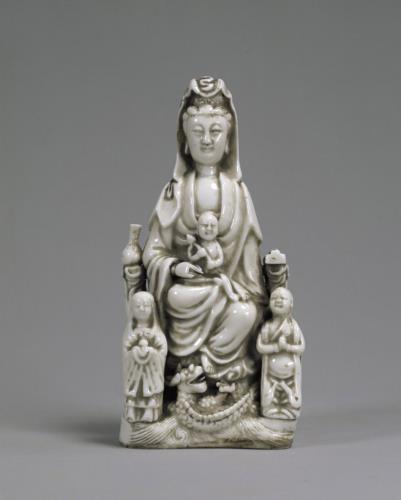Japan-based writer and traveller, specialising in design, lifestyle and travel journalism. Ron previously served as an editor of MING Magazine, ELLE Decoration and CREAM.

Photo courtesy of Tokyo National Museum
“Have you seen them? Those Bodhisattva statues with cross engravings on their chests,” I asked my husband who was watching a variety show with me, bored. “I saw them in textbooks when I was small, but I never saw the real ones.” “I really want to see them. It is surprising that Japan has such a piece in history.” My husband was a bit disapproving of my curiosity. It was common sense to him that Japan was once isolated, and the Edo and Tokugawa Bakufu’s persecution of Catholics does not merit making a fuss.
On 15th August 1549, the first missionary, Francis Xavier of the Society of Jesus, arrived at Kagoshima. In order to gain official approval to do missionary work in Japan, he visited the Mikado (emperor) of the Muromachi Bakufu multiple times since January 1551, but they were in vain. He later learnt that Japanese dignitaries attached high importance to appearance and etiquette, so he visited General Ouchi Yoshitaka in April wearing grand clothes and bringing then-rare items such as telescopes, table clocks, eyeglasses, and mini guns with him. With his help, Xavier obtained the Mikado’s approval and officially launched his missionary work in Japan. However, Xavier’s effort did not lead to Catholic’s smooth development in Japan. Starting from 1587, the missionary work transformed from public recognition to acquiescence. In 1614, Tokugawa Ieyasu strengthened the restriction order on religion, banning all activities of the Catholic church. Later on, a number of missionaries and priests martyred, while some others were forced to leave Japan due to persecution. Catholics who upheld their own faith had to hide their God under other religion. “Virgin Mary Bodhisattva”, a Bodhisattva statue holding a baby, was a faith and spiritual sustenance produced in this period.
The number of priests in Japan was extremely low, but Catholic families decided to post under the guise of Buddhism and pray to Virgin Mary disguised as Bodhisattva for their freedom of thought and at the same time ensuring their personal safety. They were called “hidden Catholics” in Japan. I am not a Catholic, but I really want to see this Bodhisattva statue in person, I think it probably engraved people’s strong will against ideological oppression. The very next day after I watched about the statue, I saw a related report in a magazine — there is a Historical Catholic Relic Museum in Ibaraki next to Osaka. It collects historic relics of the “hidden Catholics”. The next weekend, we picked the museum as the destination of our jaunt.
The museum situates at a region called “the hidden Catholic lane”. It was once an important region of Catholic missionary, Lord Ukon Takayama of Takatsuki who owned this land was also a Catholic. Even after Toyotomi Hideyoshi banned missionary, a number of hidden Catholics still gathered here. The original name of this place is called Sendaiji Temple, and I think if disciples hid Virgin Mary in a Bodhisattva, it is possible that they hid a “church” inside a “temple”. But after strolling around, we couldn’t find any temple. We later realised that the real “Catholic temple” called Kohunbyou is situated in a mountain even higher, built like a Japanese residence to cover its religious aura to hide itself.
The Historical Catholic Relic Museum did not showcase the Mary Bodhisattva, but had a collection of Catholic items originally collected in hidden corners of residences. Of those was an item named “the unopened shelf” which was originally hidden on a beam of a family. The shelf is not locked, but the ancestors of the owner urged them repeatedly to refrain from opening the shelf. They did not explain why, but their descendants kept their promise. The family later violated their ancestors’ wishes despite the strong opposition of their grandmother, who was born towards the end of the Tokugawa Bakufu. Inside the shelf was Catholic items and images that looked harmless today. But for the grandmother who went through high-hand oppression from the Bakufu government, they were big taboos- the fear of missionary ban apparently imprinted in her heart profoundly.
“The hidden Catholic lane” used to be an ordinary residential area, but since the museum that showcases this interesting episode of history was built, it has attracted visitors from all over Japan. Later on, Madamamura Café, a Jomon-period-themed restaurant cum teahouse, was opened and has breathed life into this mundane neighbourhood. Apart from serving light meals, the café also sells handmade Japanese products. In Japan, there are a lot of communities that have become thriving because of the museums or art galleries located there. The Oyamazaki Villa Museum of Art located in the Kyoto Prefecture is another example. To rejuvenate a city, protecting and preserving the history and character of each district is much more important than having more new buildings.